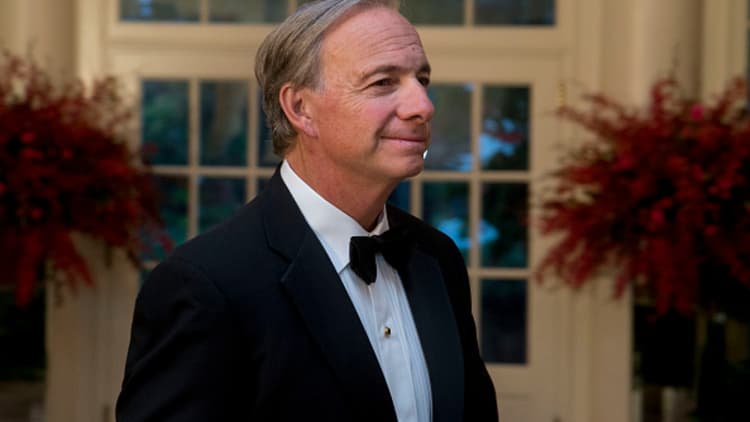
Bridgewater Associates, the world’s largest hedge fund, has long been tightly controlled by its founder, Ray Dalio, and his top two lieutenants. That is about to change.
In the coming months, the firm will reshape itself, becoming a partnership that will give its top executives significantly more say in how the $150 billion fund is run.
The new partnership model, which was announced to employees and clients on Thursday, is the latest step in a plan for Mr. Dalio, 68, to play less of a day-to-day role managing the company over the next decade.
The restructuring will put Mr. Dalio’s management philosophy to the test: He created a unique and often controversial culture at Bridgewater by establishing what he calls an idea meritocracy based on “radical transparency,” in which employees are encouraged to challenge one another openly.
But Bridgewater was far from a democracy. Final decisions rested with Mr. Dalio and the two other primary owners of the firm, his fellow co-chief investment officers, Bob Prince and Greg Jensen. By switching to a partnership model, other senior executives throughout the firm will get both an economic stake in the business and a vote in how it is managed. It is the sort of partnership that once dominated finance, akin to the model at the consulting giant McKinsey & Company or at Goldman Sachs before it went public in 1999.
“This will both broaden the ownership across the firm and help us remain employee controlled for generations to come,” Bridgewater’s co-chief executives, David McCormick and Eileen Murray, wrote in a letter to clients that was reviewed by DealBook.
Read more from The New York Times:
Bridgewater Associates, world’s biggest hedge fund, shakes up leadership
Bridgewater’s Ray Dalio dives deeper into the 'principles' of tough love
Ex-employees note a hint of turmoil in Bridgewater’s recipe for success
What it won’t mean, at least in the near term, is a move to take the company public, according to people with direct knowledge of the matter. The firm has already brought in some outside investors, including the Teacher Retirement System of Texas and Ontario Municipal Employees Retirement System, as well as Singapore’s sovereign wealth fund and the International Monetary Fund. Bridgewater executives believe those investments provided enough cash to eliminate the need to raise money through an initial public offering, these people said.
The partnership model is meant to create what Bridgewater executives have described as a “continuously improving perpetual motion machine,” able to keep operating long after Mr. Dalio leaves.
That day is far off. Mr. Dalio has said he intends to remain co-chief investment officer for as long as possible, though he has sought to cut back on managing the company’s operations.
But the transition also follows a period of upheaval within the firm’s ranks, including the departure of several top executives and outside scrutiny of Bridgewater’s tough internal culture, which has contributed to a high turnover rate among employees.
It is unclear whether putting more power in the hands of the firm’s senior employees would ultimately change its culture, or whether some of Mr. Dalio’s more unusual management methods — he requires meetings to be recorded, for example, so that all employees can later view them — might disappear.
Last year, Mr. Dalio gave up his title of co-chief executive, handing day-to-day management responsibilities to Mr. McCormick and Ms. Murray.
That won’t change. But under the plan announced on Thursday, Bridgewater will begin rolling out the concept of “employee partners” for those who already own what is known as phantom equity, entitling them to cuts of the firm’s profits without being owners of the firm.
Initially, Bridgewater will have two classes of partnerships. A handful of senior employees have been chosen as so-called seed partners, including Mr. McCormick and Ms. Murray, who have begun laying out the contours of what the partnership will ultimately look like. That will include the financial arrangements, which haven’t yet been set.
Then there is a bigger group of 50 provisional partners, whose job will be to represent the broader group of phantom equity holders and work with the seed partners on finalizing the terms of the partnership.
The final details of how Bridgewater’s partnership works haven’t been set, and it will be up to its prospective members to decide how to govern themselves. But the expectation is that they will start gaining more power over the next six months.
“Consistent with our way of operating, we are providing transparency of this progress to our employees and our clients and we look forward to sharing further details as they emerge,” Mr. McCormick and Ms. Murray wrote in the letter to clients.

